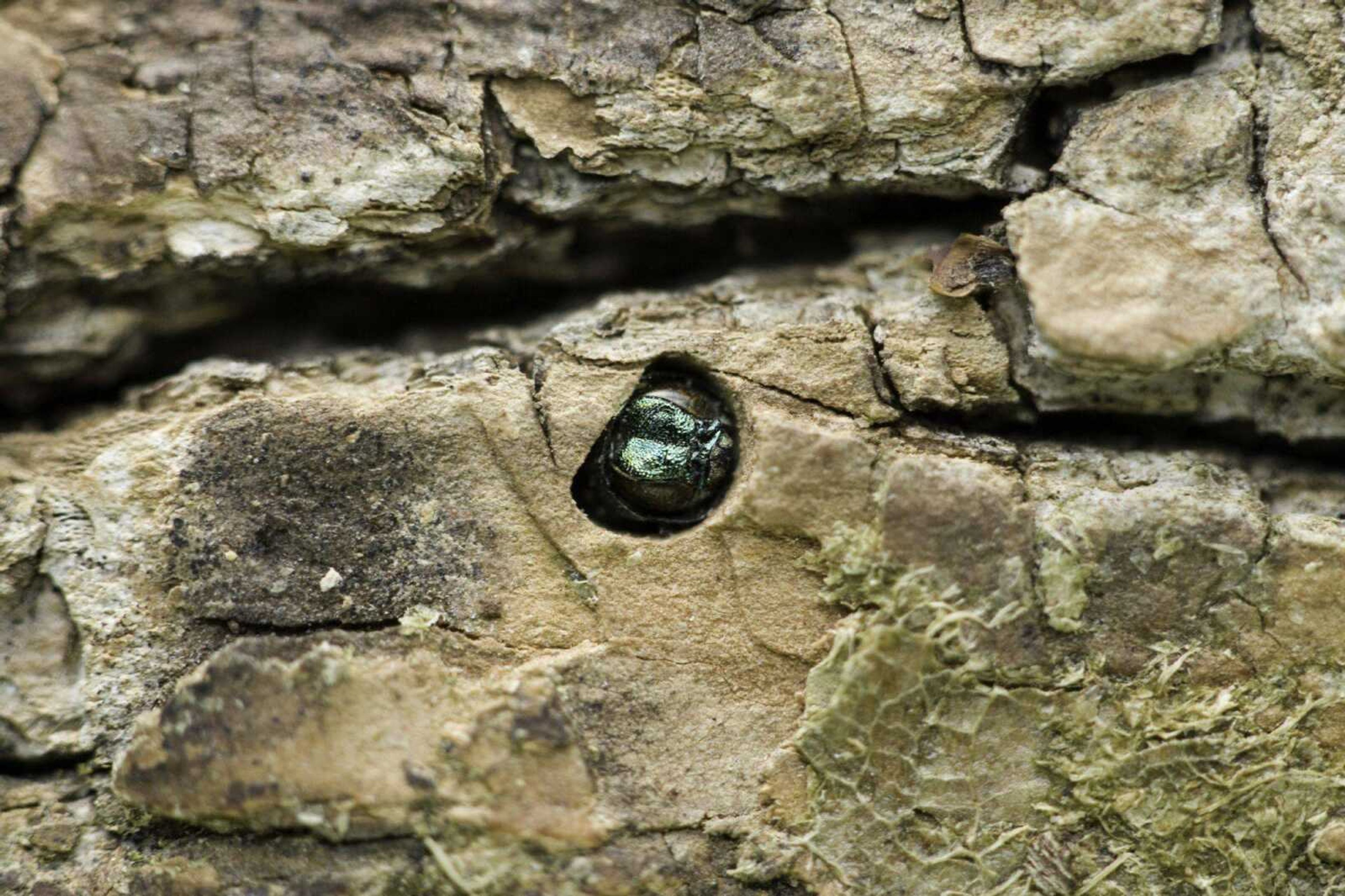ST. LOUIS -- Crews began chopping down thousands of ash trees in St. Louis parks and along city roadways Thursday due to an insidious beetle blamed in the destruction of tens of millions of trees in 26 states.
The emerald ash borer slowly made its way south from Michigan and Canada since it was discovered 14 years ago.
The beetle's larvae burrow into the bark of ash trees, killing them.
It first was spotted in Missouri in 2008 and was found last year in trees in St. Louis and nearby St. Charles.
St. Louis leaders said a dead tree becomes a public-safety risk in that could fall during a storm and needs to be removed.
The beetle's spread has prompted some drastic measures, including the National Park Service's decision in 2015 to cut down hundreds of ash trees on the grounds of the Gateway Arch before they became infested.
Ash trees are a common landscape tree and dot much of the St. Louis area.
The city's Forestry Division has been preparing for months for the arrival of the shiny green pests, according to Maggie Crane, a spokeswoman for Mayor Francis Slay.
The division plans to remove more than 15,000 public ash trees.
The condemned trees will be marked with yellow tags, and the removal process could take five years.
Meanwhile, crews will begin treating nearly 1,000 large, healthy trees by injecting them with an organic botanical compound that has proven effective in fighting the insect, said Skip Kincaid, the city's forestry commissioner.
"Some city streets and neighborhoods will see a dramatic reduction in the number of trees along their streets," Kincaid said. "This is the reality of invasive pests and provides even more emphasis on the need to have a diverse population of trees to reduce the dramatic impacts of invasive pests."
Grant money and city funds will be used to plant new trees to replace those being taken down.
Removed trees will be composted, though the city said the lumber could be used by businesses or others who want it.
Connect with the Southeast Missourian Newsroom:
For corrections to this story or other insights for the editor, click here. To submit a letter to the editor, click here. To learn about the Southeast Missourian’s AI Policy, click here.







